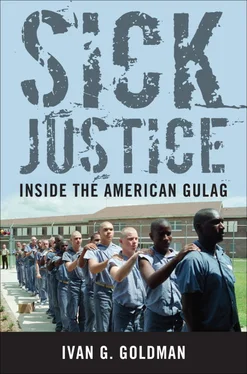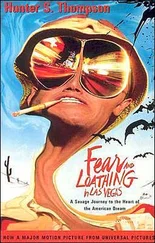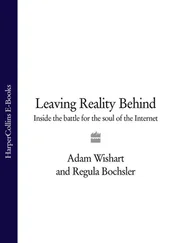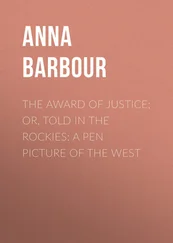Declares drug counselor Reavey,
Your world gets incredibly tiny. When you make it off drugs, you need to fill your world again. So you have to fall in love with being clean, not just with not being an addict, because that’s not enough. The ones with jobs and education have a better chance, but drugs, as we say, are cunning, baffling, and powerful. You can be walking down the street and not even feeling bad, and somebody offers you something, and you’re right back where you were. Maybe you’re a crack addict. But just taking a drink or two can ruin your judgment, and next thing you know you’re back to crack. So you have to stay away from triggers. Maybe, for instance, you can’t go to weddings anymore.
The great jazz trumpeter Miles Davis recounted locking himself in a room at his father’s house in St. Louis and not emerging until he was clean again. The story became part of his legend. But witnesses say that years later, when his health took a wrong turn and it affected his ability to make music, he returned to heroin. 16
There’s no one-size-fits-all approach to the monster problem of drug abuse. In some instances, cutting off the supply of crystal-meth, for example, may be a valid course of action because the physical properties of the drug make it so addictive. 17Although the final product is easily manufactured from mostly household substances, its base is pseudoephedrine or ephedrine, ingredients that come from sophisticated labs that drug cartels have so far been unable to duplicate. Illicit peddlers must have, somewhere in the supply chain, access to legal manufacturers of these substances. These manufacturers can be monitored and regulated if the government has the will to thwart the pharmaceutical industry (which fights this particular idea along with other regulations).
Researchers now know that crystal meth alters brain structure in a way that impedes the natural creation of dopamine, which stimulates pleasure. Meth addicts thus find themselves in a dismal world that they can’t escape without more crystal meth. Explaining all this to an addict is of limited value, even when the explanation comes from a proficient counselor. It’s not clear how long it takes to raise the addict’s natural dopamine to sufficient levels after he or she gets clean; it could take years. Some users may never respond positively to therapy. Not everyone can summon the ambition, strength, or will that’s required. But helping institutions ought to be accessible, not painfully scarce and scattered within a bureaucratic and financial maze, as they are today.
As addicts focus their lives on acquiring prohibited drugs, they typically buy and sell them among themselves and are periodically charged with possessing, transporting, or peddling. The criminalization of these activities makes it more costly to supply and transport the substances, which raises their price. Law Enforcement Against Prohibition (LEAP), an organization of current and former members of the criminal justice system who have turned against national drug policy, points out that marijuana is worth more than gold and heroin more than uranium. 18
A large number of the arraignments and hearings in today’s criminal courts involves drugs, either directly or indirectly. Indirect cases include addicts’ acts of theft or violence to obtain the cash to buy drugs at ever-higher prices. The addicts certainly can’t claim innocence in these situations, but it’s unlikely they’d be committing all these crimes if drugs were, at least to some extent, decriminalized, the way tobacco and alcohol are. Smokers don’t hold up gas stations to get cigarette money. The single worst blow the U.S. government could deliver to criminal drug gangs is to decriminalize their product. As things stand, arresting a drug dealer merely creates an opportunity for someone else to sell to his former customers.
RAND STUDY
When individuals become addicted to assault, rape, burglary, or murder, it’s clear that their compulsions are criminal acts, but it’s never been clear why drug users should suffer the same punishments as these other offenders. A RAND Corporation analysis has concluded that a dollar spent on drug treatment is eight times more effective in curtailing the flow of narcotics than a dollar spent to further the practice of mandatory sentencing of drug offenders. And it’s much easier and more cost-effective to prevent addiction through education than to cure it later. The RAND study didn’t contend that illicit drugs are harmless to the user, and it didn’t argue with the mission of curtailing drug use. It merely used empiric means to determine optimum tactics and strategy against drug use. 19
Likewise, former Seattle police chief Norm Stamper does not claim that it’s a fine idea for folks to sit around the house smoking crack. But making drug use a flat-out crime, argues Stamper, a prime mover within LEAP, doesn’t work. Criminalizing drugs means they remain unregulated and untaxed. It also means that the criminal networks that take over the distribution of drugs can sell them to children or mix them with rat poison. Further, criminalizing drugs requires police to focus less on fighting real crime and to divert their attention to making drug arrests. Stamper began seriously questioning drug policy when, as an officer on the street, he had to spend several hours processing a low-level marijuana bust. 20
In May 2009 Obama’s drug czar, Gil Kerlikowske, declared an end to the war on drugs, but it soon became clear that all the administration really ended was the use of a nomenclature that had become an embarrassment. Policy remained the same. LEAP, after examining the data, concluded that like the Bush administration, the Obama administration heavily favored spending on punishment over treatment, “even though [Obama] has said drug addiction should be handled as a health issue.” 21The DEA under Obama even stepped up raids against medical marijuana shops, which have been made legal in a growing number of states but are still forbidden under federal law.
Observing what’s considered the fortieth anniversary of the drug war in June 2011, LEAP officers tried to deliver a copy of their legalization recommendations to Kerlikowske. The drug czar refused to meet with them. A staffer accepted the document down in the lobby. LEAP executive director Neill Franklin, a former Baltimore narcotics cop, used the occasion to note that in 1971 there were fewer than half a million drug arrests, whereas forty years later there were nearly 2 million annually. According to LEAP, the United States had already spent a trillion dollars on the drug war by the year 2011. Two years earlier Time stated the true sum was closer to $2.5 trillion. Whatever the true number, it’s clear that the cost has been too high.
The implacable commanders waging the war on drugs have learned to use tools such as the Patriot Act to further their mission. The original Patriot Act that glided over legislative gates in the wake of 9/11, for example, legalized “sneak-and-peek” searches that allowed authorities to undertake black-bag jobs against suspects without notifying them that their premises had been searched. Naturally, these searches were sold as a way to capture terrorists, but Ryan Grim at the Huffington Post , who gained legal access to a July 2009 report from the Administrative Office of the U.S. Courts, reported that of 763 sneak-and-peek search warrants issued the previous year, only three were related to alleged terrorist offenses. That equals less than one-half of 1 percent. Nearly two-thirds (62 percent) were issued to investigate suspected drug offenses. 22Then-senator Russ Feingold (D-WI) called it “quite extraordinary to grant government agents the statutory authority to secretly break into American homes in criminal cases, and I think some Americans might be concerned it’s been used hundreds of times in just a single year in non-terrorism cases.” 23
Читать дальше












